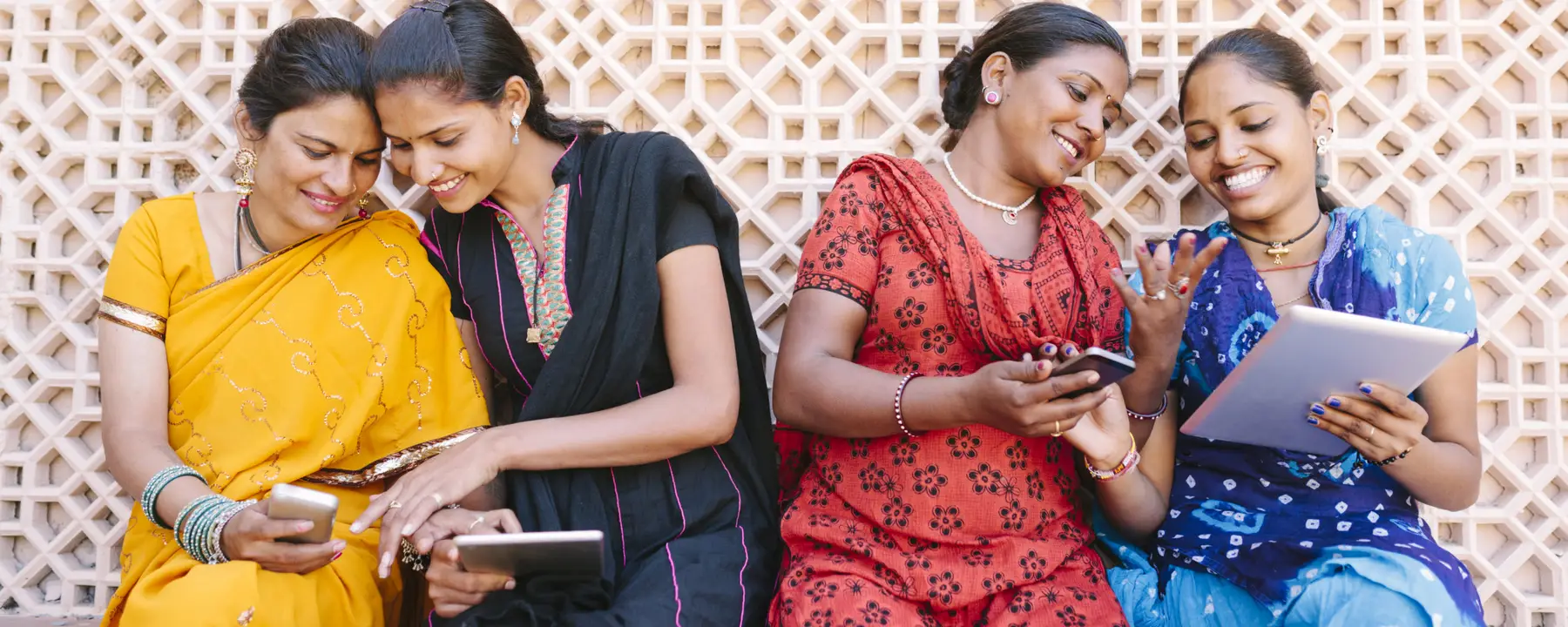Free toolkit helps public health organizations in India understand and use digital communication
Due to its efficiency, speed, and cost-effectiveness, digital media continues to grow and dominate the way we communicate across the world and in all sectors, including public health. Increasingly, people search for, read, watch, share, and create information about their health on their phones, the web, and social media.
In 2016, more than 400 million Indians had access to the internet, up from almost 200 million three years prior. That same year, India became the second country to reach 1 billion mobile phone subscribers. Social media use also grew, with more than 60 percent of the population on social media networks, including the second largest number of Facebook users in the world.
Chronic diseases are also increasing in India. Since 2014 the country has seen 1 million new cancer cases diagnosed each year, a rate that is projected to reach 1.7 million by 2035.
The Rising Importance of Digital Communication for Public Health
In 2016, our experts in communication science conducted a study that found that Indian communities are increasingly turning to digital platforms—such as Wikipedia and social media sites—for cancer information. Yet Indian organizations often lack the resources, digital literacy, and strategic planning to harness digital communication for health impact. For example, communication research and best practices for web design are not often implemented by resource-poor Indian organizations.
Digital communication initiatives hold great potential for health promotion and disease prevention in India. They provide resources to dispel myths, disseminate evidence-based information, promote behavior change, empower individuals, and organize communities. Digital tools such as websites, mobile phones, social media platforms, and email also allow public health practitioners to
- Reach diverse populations with essential health information
- Engage populations in health promotion efforts
- Influence individuals and communities to choose healthy behaviors
- Incite action around key health issues.
Developing a Tool to Enhance the Use of Digital Communication
To enable Indian public health organizations to take full advantage of digital communication tools, we developed a Digital Health Communication Toolkit. This toolkit incorporates best practices, case studies, and expert recommendations to fully leverage digital communication for public health.
The toolkit is the culmination of a year of international collaboration and investigation into India’s health communication landscape. We conducted qualitative, formative research with college students and Indian nongovernmental organizations (NGOs) to assess Indians’ preferred communication channels for cancer information, and the viability of online platforms to serve as digital health information hubs. Our findings led to the development of a six-step approach to maximize digital health communication in India:
- Step 1: Understand your audience
- Step 2: Define your objectives
- Step 3: Select your strategies and tactics
- Step 4: Craft your messaging and content
- Step 5: Select your tools
- Step 6: Track your impact.
Putting the Tool in Practice
With a view toward understanding the application of our research to web design, our team of communication experts launched an effort with the Indian Cancer Society (ICS) to apply best practices outlined in the toolkit to effectively and cost-efficiently update ICS’s website.
We helped ICS staff members understand and refine their objectives for the site, which included aligning their organizational goals with the needs of its priority audiences: patients, caregivers, volunteers, NGOs, providers, and the general public. We worked with ICS to prioritize strategic updates to connect users to reliable cancer resources and services, and our web developers implemented those updates—including simplifying the home page, adding photos, and streamlining navigation.
As a final step, we conducted usability testing with representatives of each priority audience group to better understand how they interact with ICS’s web content. This usability testing prioritized the toolkit’s first step―understanding your audience―to ensure that ICS’s website meets user needs. Based on the results of this testing, we finalized ICS website updates to improve navigation, comprehension, and engagement.
Our hope is that the toolkit will enable ICS and other organizations across India to seize the tremendous potential of digital communication platforms to empower patients and providers with knowledge and resources, and raise the level of public health across the nation.
- RTI Funded
- Global Health
- Public Health and Well-Being
- Health Behavior Change
- Innovation for Organizations
- Innovation for Emerging and Developing Economies
- Digital Communication Campaigns
- Cancer Research
- Global Noncommunicable Diseases
- Innovation for Sustainable Economic Growth in Emerging and Developing Economies




